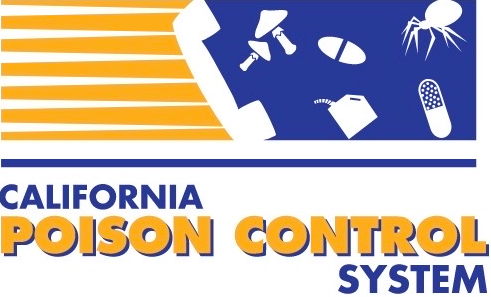By Cyrus Rangan, MD
Winter 2010
Introduction
Millions of cases of food poisoning are reported to poison centers, public health departments, and other health agencies every year. Food poisoning represents a crossover between infectious diseases and toxin-mediated illness, as many bacteria elaborate toxins to produce symptoms. Some cases of food poisoning involve colonization and reproduction of bacteria in the gastrointestinal tract, while others arise from pre-formed toxins in food. Food poisoning may also result from viral, fungal, or chemical contamination; this newsletter will focus on food poisoning from bacterial etiologies. Bacterial food poisoning may be short-lived and self-limited (e.g. Bacillus cereus, Staphylococcus aureus); or prolonged, with severe symptoms, complications, and sequelae (e.g. Campylobacter spp., Escherichia coli, Shigella spp.).
Case 1 presentation
A 30-year-old female had abdominal cramping and 2 episodes of vomiting after reheated fried rice that was taken home from a restaurant the night before. Onset was approximately one hour after eating the food. There was no fever and no diarrhea. By the morning she felt fine and did not seek medical attention.
Questions
- What is the likely causative agent?
- Why did the victim not experience diarrhea?
- Why did she not experience food poisoning from eating the same rice while at the restaurant?
Case 2 presentation
A 9-year-old male ate a meal including Cornish game hen cooked at home. The next morning, he presented to the ED with fever, abdominal pain, and vomiting. Pain and tenderness was localized to the right lower quadrant. He was taken to the operating room for a suspected appendicitis. Intraoperatively, the appendix was noted to be healthy. 12 hours post-op, he started to have diarrhea, which continued for 7 days before discharge. A few weeks after resolution of symptoms, he began to have lower extremity weakness that progressed to respiratory failure. With intubation and supportive care, he recovered in 4 weeks.
Questions
- What was the likely causative agent?
- What condition led to the misdiagnosis of appendicitis?
- What was the significant sequela experienced by the patient?
Bacillus cereus
Bacillus cereus may be the single most common cause of foodborne illnesses worldwide, but is rarely diagnosed in the clinical setting or reported to health agencies because symptoms tend to be short-lived and self-limited. Starchy foods, such as rice (particularly fried rice), cereals, pastas, and pastries are common sources of B. cereus. Vegetables, sauces, soups, meats, and dairy products are also reported as food sources. B. cereus may persist in food from agricultural fields all the way to the grocery store, secondary to its ability to form spores. Both spores and vegetative cells may be found in foods. Cooking easily destroys vegetative cells, but spores survive, and may germinate when food is cooled to room temperature. Enterotoxins are subsequently elaborated, and reheating fails to destroy these toxins. Victims often complain of transient abdominal discomfort, accompanied by 1-2 episodes of vomiting or diarrhea within 1-24 hours after exposure, and often do not seek medical attention. Distinct toxins are responsible for two forms of gastrointestinal disease. Some serotypes of B. cereus produce a mild emetic illness mediated by a dodecadepsipeptide gastric irritant called cereulide, while other serotypes produce a mild diarrheal illness mediated by Hemolysin BL, which punches pores or channels into intestinal cell membranes and disrupts tight junctions. Vomiting and diarrhea rarely occur together with B. cereus. Rehydration and bowel rest are sufficient, and further treatment is rarely needed, given the short duration of symptoms. Young children may experience mild dehydration requiring intravenous fluids, especially if oral intake is poor.
Clostridium perfringens
Clostridium perfringens causes a toxin-mediated disease that closely resembles the diarrheal illness produced by B. cereus, and is the 3rd most commonly reported food-borne illness behind Salmonella and Campylobacter spp. Food sources include under-cooked or inadequately stored meats, poultry, meat stocks, stews, and gravies, although any food including non-animal protein (e.g., spinach boiled with fried bean curd) that undergoes slow cooling or inadequate reheating (<65o C, 149o F) is a potential source of human exposure. Enteric toxins form pores or channels in host cell membranes and disrupt tight junctions. Symptoms include abdominal cramping and diarrhea, usually without blood, and last less than 24 hours. Fever and vomiting may occur on rare occasion. Rehydration and bowel rest are generally sufficient. Clinical evidence does not support the use of anti-diarrheal medications such as loperamide, and the short duration of symptoms generally limits the need for these medications; however, some patients may experience symptomatic relief with these agents when symptoms are severe. The use of such medications should be limited to patients 12 years or older.
Staphylococcus aureus
Staphylococcus aureus causes a toxin-mediated disease that closely resembles the emetic illness produced by B. cereus. S. aureus may be present in virtually any food, as the primary source is food handlers who contaminate food via coughing, sneezing, and touching food, usually during preparation. The most commonly reported food sources are red meats and sausages, poultry, cheeses, cream-filled pastries, milk, dairy products, salads made with chicken, egg, tuna, and macaroni, and fermented dairy products, such as soft cheeses and creams. S. aureus produces a number of enterotoxins that cause hyperemia and inflammation of the gastric mucosa, and stimulate gastric epithelial receptors to induce vomiting. Symptoms include early nausea, vomiting, retching, and abdominal cramping, with rare diarrhea. Rehydration and bowel rest are generally sufficient, with spontaneous resolution of symptoms typically within 24-48h. Antibiotics are not recommended, as this illness occurs via pre-formed toxins, and not from direct infection with S. aureus.
Escherichia coli
Over 170 serogroups of Escherichia coli are distinguished by the expression of O (somatic), H (flagellar), and/or K (capsular) antigens. E. coli O157:H7 (enterohemorrhagic E. coli, or EHEC) has emerged as the most notorious of these bacteria, based on the threat of E. coli to public health. Food left outdoors for extended periods of time is particularly vulnerable to contamination by E. coli. Commonly reported sources include ground beef, potatoes, alfalfa sprouts, unpasteurized fruit juice, dry-cured salami, deer jerky, game meat, cheese curds, artichokes, raw unpasteurized cow’s milk, hard taco shells, coleslaw, fruit salads, semi-soft cheeses, raw fruits and vegetables, tabbouleh, parsley, raw seafood, meat, poultry, untreated water, and herbal supplements. Fimbriae on the outer bacterial membrane of EHEC mediate the formation of microcolonies in the GI tract. Once colonized, EHEC elaborates toxins that mediate attachment to and effacement of GI villi cells. EHEC initially secretes a filamentous, needle-like chute that pierces the villous membrane, and then exports a second secretory protein down this chute, to form a pore. EHEC then sends a third protein to settle into this pore. This third protein becomes a new receptor, through which EHEC takes control of the villous epithelial cell. First, EHEC induces the enzyme villin to depolymerize the actin cytoskeleton of villi cells. Secondly, EHEC recruits and cross-links free-floating actin fragments, leading to complete effacement of villi cells. EHEC then injects cyclomodulin, halting mitosis, and slowing down epithelial cell turnover (an important defense mechanism of the GI epithelium against the colonization of foreign invaders). Finally, EHEC secretes Shiga-toxins, which deactivate the 60S ribosomal subunit. Cellular machinery shuts down, leading to cell death, edema, hemorrhage, and subsequent bloody diarrhea. Shiga-toxins also stimulate production of pro-inflammatory mediators and suppress anti-inflammatory cytokines. Symptoms include 3-4 days of watery diarrhea, dehydration, and severe cramps, followed by bloody diarrhea with occasional vomiting and fever. GI symptoms resolve within 14 days with supportive care. 10-15% of pediatric patients progress to hemolytic uremic syndrome (HUS), manifested by microangiopathic thrombocytopenia, hemolytic anemia, and oliguric renal failure within 2 weeks of resolution of GI symptoms. HUS is the most common cause of acute renal failure in children in the United States, with 50% of cases requiring dialysis. Mortality with intensive care is 3-5%. Supportive care with rehydration and bowel rest is sufficient for the GI phase of illness. Recent prospective studies demonstrate an increased risk (RR = 14.3, 95% CI 2.9-70.7) of HUS with antibiotic treatment in children with E. coli O157:H7. However, because the similarity in onset of bloody diarrhea during both Shigella (discussed below) and E. coli O157:H7 infections, antibiotic therapy with a second- or third-generation cephalosporin (e.g., ceftriaxone) is generally recommended until stool cultures return. Definitive diagnosis is often delayed by EHEC serotyping, thus close communication with the laboratory regarding bacteria identification is recommended in cases in which empiric antibiotic therapy has been initiated. Once E. coli has been identified, discontinuation of antibiotics should be strongly considered.
Campylobacter jejuni
Campylobacter jejuni was originally categorized as a Vibrio species, until the discovery that it was unable to metabolize carbohydrates or lipids, and required a microaerophilic (<5% oxygen) environment, leading to the classification of Campylobacter as a unique bacterium in the 1970s. C. jejuni is the most commonly reported cause of bacterial gastroenteritis in the U.S. (2 million cases per year), with 4 million cases per year worldwide. Transmission may occur via ingestion of food or via contact with carrier animals, including wild animals (water fowl, rodents, flying insects), food animals (poultry, cattle, shellfish), and domestic animals (dogs, cats, birds). Healthy humans are not carriers. C. jejuni thrives at 40-42oC (104-107.6oF). The mean body temperature of live chickens is 41°C (105.8oF). Thus chickens are an optimal reservoir for bacterial growth, with contamination often persisting throughout food production and onto grocery aisles. Indeed, almost 100% of grocery store chicken is contaminated with Campylobacter spp. Fortunately, C. jejuni is killed easily with adequate pasteurization and cooking. Raw milk, untreated drinking water, and undercooked meat, specifically chicken, pork, beef, and sausages, are the most common food sources of C jejuni. C. jejuni proliferates poorly in food when ambient temperature is below 37oC (98.6oF), or when ambient oxygen is atmospheric. Thus, human infections are sporadic, rarely resulting in outbreaks. C. jejuni uses a darting, corkscrew-like motility to facilitate passage through the damaging milieu of gastric acid. C. jejuni then colonizes in the colon and distal ileum, and releases a heat-labile, cytolethal-distending toxin (CDT), which: 1) attacks intestinal endothelial cell DNA, 2) recruits protein kinases to block cells from entering into mitosis, and 3) induces a local inflammatory reaction, cell lysis and watery or bloody diarrhea with fecal leukocytes. Epithelial cells vacuolize C. jejuni in an attempt to kill it; however, C. jejuni resists lysosomal enzyme degradation via catalases and anti-oxidants. The vacuole translocates to the basolateral cell surface, where C. jejuni undergoes exocytosis, and either proliferates in lamina propria and mesenteric lymph nodes (mesenteric adenitis), or disseminates, causing extraintestinal infections (e.g., sepsis, meningitis).
An important sequela to C. jejuni infection is Guillain-Barré syndrome. Occurrence is mediated by antigenic similarities between the terminal tetrasaccharide of the C. jejuni lipo-oligosaccharide endotoxin, and the GM1 ganglioside on the membrane of peripheral nerves. Symptoms include watery or bloody diarrhea, cramps, nausea, myalgias, and fever. Abdominal pain with tenderness in the right lower abdomen, fever, headache, lethargy, and anorexia may precede diarrhea by several hours, thus mimicking appendicitis. Appearance of blood in stools may be occult or frank. Incubation time is approximately 2-5 days, and symptoms typically resolve in 3-10 days, with recrudescence in approximately 25% of untreated cases. Symptoms of Guillain-Barré Syndrome include ascending paralysis with areflexia (or the Miller-Fisher Variant, with ophthalmoplegia, upper extremity areflexia, and cerebellar ataxia) and respiratory failure in 1/3000 cases. C. jejunimay be responsible for up to 40% of all GBS cases, and is frequently very severe, with 2-3% mortality and 20% of patients carrying residual disabilities. Most cases of C. jejuni infection are self-limited; however, antibiotics are used in selected cases, such as persistent fevers, bloody diarrhea, >8 stools/24h, symptoms >1 week, pregnancy, or immunocompromise. Resistance to penicillins, most cephalosporins, quinolones, tetracycline, and metronidazole is prominent. Treatment with macrolides (azithromycin) is recommended for 5-7 days to reduce illness duration by 5-10 days and to attenuate subsequent fecal shedding of bacteria.
Shigella spp.
Shigella spp. found in undercooked meat and contaminated water are responsible for the vast majority of U.S cases of shigellosis. Any food, milk, or drinking water source with exposure to fecal contamination may harbor Shigella, including cold food on commercial airlines. Handling of food by asymptomatic carriers may also transfer Shigella spp. to food. Shigella first travels to the basolateral surface of columnar epithelial cells, where lymphofollicular M cells transcytose Shigella to a subepithelial macrophage, which phagocytoses the organism. Shigella then degrades the phagosome, and invades columnar epithelial cells of the terminal ileum and colon, where they are free to multiply intracellularly. Intracellular Shigella binds to adjacent columnar epithelial cells and subsequently rearranges the cytoskeleton. The rearranged cytoskeleton buckles membrane, allowing Shigella to transport through the buckled membrane and into adjacent epithelial cells, where multiplication continues into the millions. Symptoms include a brief nonspecific prodrome of anorexia, malaise, weakness and osmotic, watery diarrhea that may precede dysentery – followed by the very sudden onset of severe cramping, tenesmus, fever, myalgias, and frequent, small bloody, mucoid stools. Seizures may occur, particularly in children. S. dysenteriae usually produces very severe disease, in which patients may pass >20 dysenteric stools in one day. Infections in the U.S. are less severe, usually coming from other species, such as S. sonnei. Symptoms may resolve spontaneously after 7 days; however, all cases of confirmed or suspected shigellosis should be treated with antimicrobials to avoid complications (especially seizures), disease recurrence, and secondary transmission. Antibiotic therapy decreases illness duration from 7 days to 48-72 hours, significantly decreases shedding, and reduces the incidence of extraintestinal manifestations. Intravenous or intramuscular ceftriaxone for 5 days in children is recommended. Adults may receive ceftriaxone, azithromycin, or quinolones in susceptible strains (resistance to sulfonamides, penicillins, and tetracyclines is prominent).
Salmonella spp.
Samonella may appear in raw or undercooked eggs, alfalfa sprouts, cantaloupe, undercooked meat (beef, pork), poultry products, unpasteurized milk, and dairy products (e.g., unpasteurized ice cream, cheese), and foods containing raw eggs (homemade eggnog or ice cream, hollandaise sauce, cold deserts, and Caesar salad dressing). Salmonella is phagocytosed by lymphofollicular M cells located in the follicle-associated epithelium in the Peyer’s patches, allowing invasion. Salmonella excretes a heat-labile enterotoxin causing an inflammatory diarrhea by invading the mucosa. Classic cases include enteric fever, abdominal cramps, and diarrhea ranging from a few loose stools to a severe watery diarrhea. The majority of stools are non-bloody and moderate in volume, although gross blood may occur. Fever should be treated promptly with appropriate antibiotics (fluoroquinolones, ceftriaxone, azithromycin). Antibiotic therapy usually is not indicated in uncomplicated non-typhoidal Salmonella enterocolitis. Antimotility agent (e.g., loperamide) may decrease the number of stools, and probably does not prolong course or increase incidence of carrier state, but should be used with caution because of the increased potential for bacteria invasion and systemic spread.
Case 1 answers
- What is the likely causative agent?
Bacillus cereus. The short-lived symptoms from ingestion of fried rice are prominent clues. - Why did the victim not experience diarrhea?
Individual serotypes of B. cereus are known to cause vomiting OR diarrhea, but rarely both. - Why did she not experience food poisoning from eating the same rice while at the restaurant?
Spores of B. cereus tend to persist as spores during food preparation. As the food cools to room temperature (at the restaurant), the spores begin to vegetate and elaborate toxins as the food is packaged and taken home. Reheating does not destroy the toxins, explaining the toxin exposure at home, and not at the restaurant.
Case 2 answers
- What was the likely causative agent?
Campylobacter jejuni. - What condition led to the misdiagnosis of appendicitis?
C. jejuni can cause extra-intestinal manifestations before the onset of diarrhea. A common extra-intestinal location is the mesenteric lymph nodes. Inflammation of these nodes can cause a clinical syndrome that mimics appendicitis. - What was the significant sequela experienced by the patient?
Guillain-Barré Syndrome. Up to 40% of all cases of GBS may be caused by C. jejuni.



